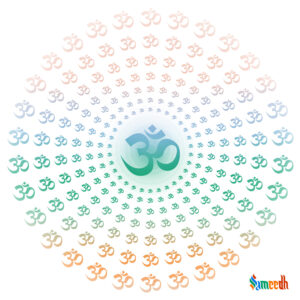“Sampradaya” is a Sanskrit term in Hinduism that refers to a traditional lineage or school of thought within the broader Hindu philosophical and religious tradition. These Sampradayas are often characterized by their specific beliefs, practices, rituals, and interpretations of scripture. Each Sampradaya typically venerates a particular deity or deities and follows distinct religious customs and traditions.

The term “Sampradaya” can be translated as “tradition,” “lineage,” or “sect.” It denotes a lineage of teachers and disciples who transmit spiritual knowledge, practices, and rituals from generation to generation. Within each Sampradaya, there is a recognized authority or guru who serves as the custodian of the tradition and guides the spiritual aspirants.
Some well-known Sampradayas in Hinduism include:
- Vaishnava Sampradaya: This lineage venerates Lord Vishnu or his avatars (incarnations) as the supreme deity. Vaishnava Sampradayas include Vaishnavism and its various sub-traditions. Vaishnavism is a sect within Hinduism that worships Lord Vishnu as the supreme deity. Followers of Vaishnavism, known as Vaishnavas, believe in the divine incarnations (avatars) of Vishnu, including Ram and Krushna. Vaishnavism emphasizes devotion (bhakti) to Vishnu as the path to salvation. Vaishnava Sampradayas include Sri Vaishnavism, Gaudiya Vaishnavism, Pushtimarg and others.
- Shaiva Sampradaya: This lineage reveres Lord Shiv as the supreme deity. Shaiva Sampradayas include Shaivism and its various sub-traditions . Shaivism is a sect within Hinduism that worships Lord Shiv as the supreme deity. Followers of Shaivism, known as Shaivas, revere Shiv as the destroyer and transformer of the universe, as well as the ultimate reality (Brahman). Shaiva Sampradayas include Shaiva Siddhant Agamas, Kashmir Shaivism, Natha Sampradaya and others.
- Shakta Sampradaya: This lineage worships the divine feminine energy or Shakti as the supreme deity. Shakta Sampradayas include Shaktism and its various sub-traditions. Shaktism is a sect within Hinduism that worships the divine feminine energy or Shakti as the supreme deity. Followers of Shaktism, known as Shaktas, venerate Goddess Devi in various forms, including Durga, Kali, Lakshmi, Parvati and Saraswati. Shaktism emphasizes the active, creative aspect of the divine and often incorporates tantric practices.
- Smarta Sampradaya: Smarta is a sect within Hinduism that emphasizes the equal validity of various deities and paths to the divine. This lineage acknowledges the equal validity of various deities and paths to the divine. Smarta Sampradayas worship five main deities: Vishnu, Shiv, Devi (Shakti), Ganapati (Ganesha), and Surya (the sun god). Smartism promotes the idea of universalism and inclusivity, acknowledging the diversity of Hindu traditions and beliefs.
- Natha Sampradaya: The word “Natha” means “lord” or “master,” and followers of this tradition are called “Nathas” or “Nath yogis.” The Natha Sampradaya is believed to have been founded by Matsyendranath and further developed by his disciple Gorakshanath, who is considered one of the most important figures in the tradition. The Natha Sampradaya emphasizes the attainment of spiritual liberation through physical and mental practices, including yoga, meditation, breath control, and tantric rituals. They are known for their emphasis on the awakening of kundalini, the dormant spiritual energy believed to reside at the base of the spine.
- Advaita Vedanta Sampradaya: This lineage follows the teachings of non-dualistic Vedanta philosophy, as expounded by Adi Shankaracharya and his disciples. The Advaita Vedanta Sampradaya has since flourished through various lineages and monastic orders, with numerous scholars and teachers contributing to its development and dissemination. Advait Vedanta has had a profound impact not only within Hinduism but also on other religious and philosophical traditions, influencing thinkers and practitioners worldwide.
Each Sampradaya has its own scriptures, philosophical texts, rituals, and spiritual practices that distinguish it from others. While there are differences among them, they all contribute to the rich tapestry of Hindu thought and practice, reflecting the diversity and pluralism within Hinduism.